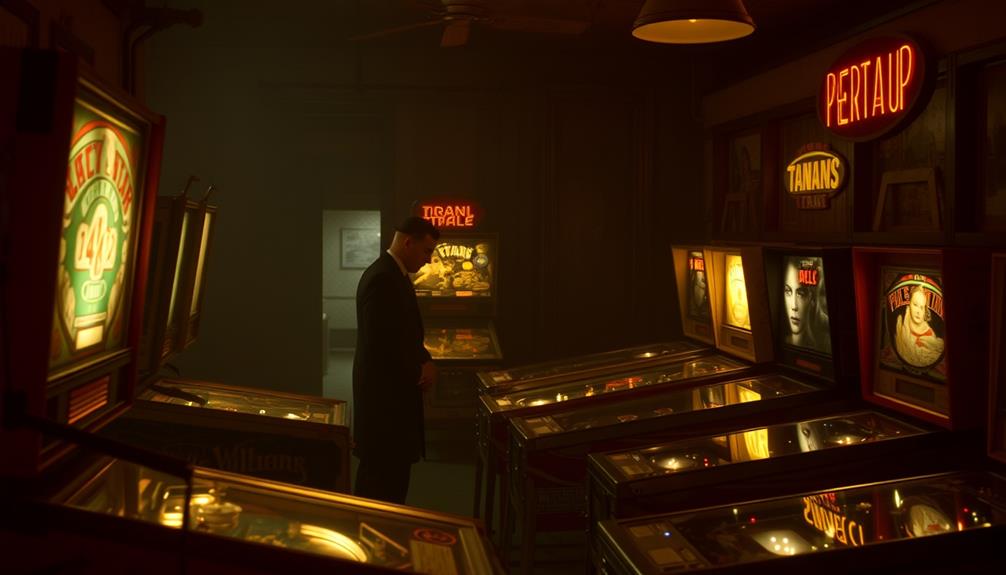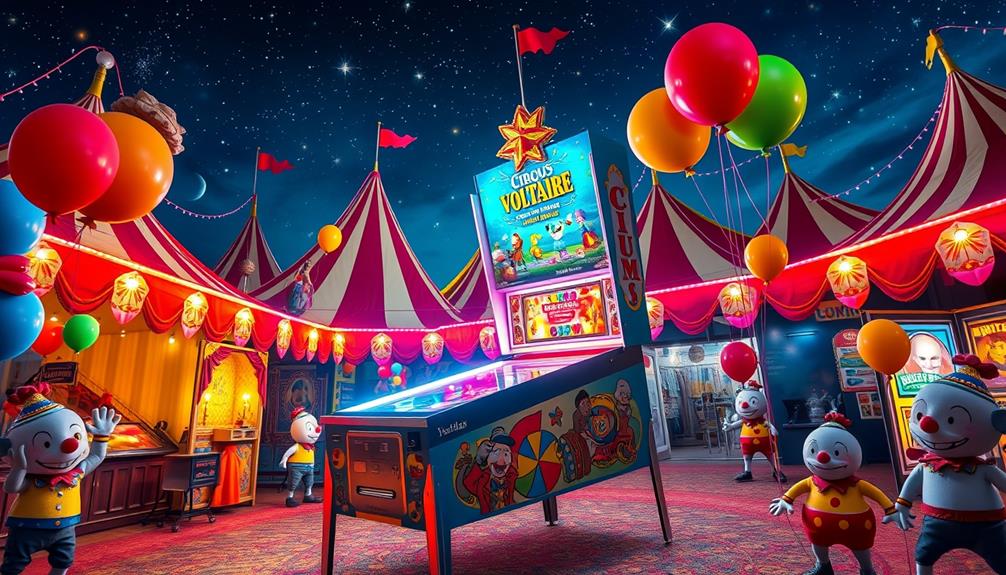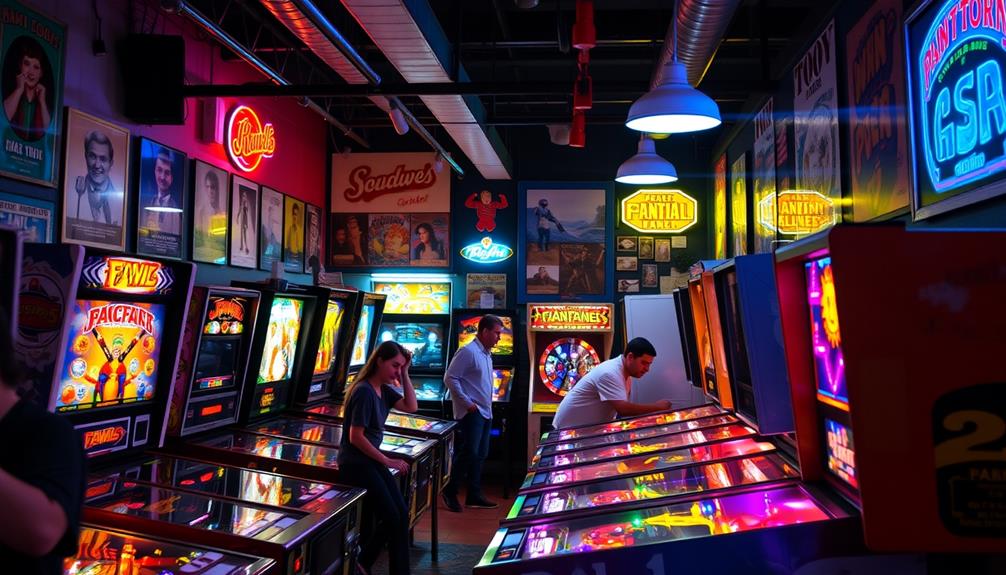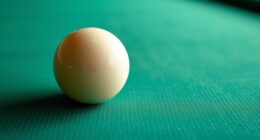Pinball machines are constructed using a variety of materials that work together to create an exciting gaming experience. A robust plywood cabinet serves as the main structure, while the playfield is typically crafted from the same durable material. Metal components, such as screws and springs, utilize stainless steel or aluminum to provide strength. Pinballs themselves are commonly made from carbon steel to achieve a balance between weight and playability. Additionally, molded plastic elements are incorporated for intricate designs that enhance gameplay. This combination of wood, metal, and plastic results in a cohesive and engaging game. Wondering about the assembly process of these machines? Stay tuned for more details! Each pinball machine is meticulously put together by skilled technicians who ensure that every part is correctly installed and functioning. The complex network of wires and mechanisms must be carefully rigged to ensure the game runs smoothly and reliably. With a mix of precise craftsmanship and high-quality materials, pinball machines offer endless entertainment for players of all ages. In addition to craftsmanship and quality materials, the weight of pinball machines also plays a key role in their stability and durability. The heaviness of the cabinet and playfield helps anchor the machine during gameplay, preventing excessive tipping or shaking. This weight, along with the sturdy construction, contributes to the long-lasting nature of pinball machines, making them a timeless and enduring source of entertainment.
Key Takeaways
- The primary structure of pinball machines is made from sturdy plywood for durability and support.
- Metal components, including screws and springs, are typically crafted from stainless steel or aluminum.
- The playfield features special elements constructed from molded plastic for intricate designs and features.
- Pinballs are commonly made from carbon steel, with chrome steel as an alternative material.
- A combination of wood, metal, and plastic materials ensures optimal functionality and gameplay experience.
Overview of Pinball Machine Components
When you immerse yourself in the world of pinball machines, you'll find a fascinating array of components that work together to create an engaging gaming experience. At the heart of these machines is the wooden cabinet, typically crafted from sturdy plywood, which provides a solid frame.
Sitting atop this cabinet is the backbox, housing the scoring displays and vibrant artwork that enhances the game's visual appeal. The intricate designs often reflect popular culture, similar to how best vacuums for dust removal are designed to tackle specific cleaning needs.
As you play, you'll notice the playfield, inclined at about 6.5 degrees, where the real action happens. This area is filled with various components like flippers, bumpers, and targets designed to keep the ball in motion and challenge your skills. The flippers allow you to launch the ball, while bumpers and targets add excitement and scoring opportunities.
The pinballs themselves are made from carbon steel, weighing around 80 grams and measuring 1 1/16 inches in diameter. This design enables them to navigate through narrow ramps and interact effectively with other playfield elements.
Materials Used in Construction

The construction of pinball machines relies on a variety of materials that work together to create a durable and engaging gaming experience. The playfield design is primarily crafted from inexpensive and sturdy plywood, providing a durable surface that can withstand the rigors of play.
Well-draining soil is essential for preventing root rot, much like how the right materials are vital for the longevity of pinball machines. Metal components, such as screws and springs, are typically made from stainless steel or aluminum, ensuring strength and longevity throughout the machine's lifespan.
Special playfield elements, which enhance gameplay features, are often constructed from molded plastic. This allows for intricate designs while maintaining durability. When it comes to the pinballs themselves, they're usually made from carbon steel, with alternative options like chrome steel available for custom designs. These materials contribute not only to the aesthetic but also to the overall functionality of the game.
In total, a pinball machine incorporates approximately 1,000 parts, blending wood, metal, and plastic materials seamlessly. This combination creates a cohesive gaming experience that balances durability with engaging play.
Whether you're a casual player or a hardcore enthusiast, understanding these materials adds depth to your appreciation of pinball machines.
Manufacturing Process Explained

Creating a pinball machine involves a detailed manufacturing process that transforms raw materials into a complex gaming apparatus. It all starts with sturdy and inexpensive plywood, which is cut using automated high-pressure machines to form the playfield.
You'll find that metal components, including screws and springs, are crafted from stainless steel or aluminum, guaranteeing durability and peak performance. The assembly process also requires careful budgeting, as it can be quite costly, and understanding investment strategies can help manufacturers make informed financial decisions about production costs and potential returns on investment in their equipment and materials a budget plan.
As you dive deeper into assembly, you'll discover that each machine contains about 1,000 parts. The assembly process can take 20-30 hours and requires around 1,000 factory workers to carefully handle intricate wiring and small components.
Special playfield elements are produced from molded plastic, while the vibrant artwork is applied through a four-color silk-screen printing process by outside vendors.
Throughout this manufacturing process, quality control plays a vital role. Individual parts are thoroughly inspected upon arrival, and prototypes are created to serve as the main quality check before mass production begins.
This meticulous attention to detail guarantees that the final pinball machine meets high standards of performance and aesthetics, ready to entertain players for years to come.
Quality Control Measures

Guaranteeing high-quality production in pinball machines hinges on rigorous quality control measures that kick in before mass production starts. During this phase, manufacturers focus on inspecting individual parts to confirm they meet specified standards.
Prototypes play a vital role in this process, acting as the main quality check for playability, safety, and overall product integrity. These controls are similar to how cold medications are tested to verify they're safe and effective for users. Based on testing feedback from these prototypes, any necessary modifications to the manufacturing process are identified, leading to improvements before larger production runs.
Once these adjustments are made, a small run of 50-100 games is produced for further inspection. This step verifies the production line's readiness and allows for final tweaks based on initial testing feedback.
Comprehensive safety tests are also conducted in private laboratories to assure that pinball machines don't pose any injury risks to players. These thorough evaluations confirm that every machine not only meets quality control standards but also maintains the highest levels of safety.
Historical Development of Pinball Machines

Pinball machines have evolved considerably since their origins in the 18th century with the French game Bagatelle, where players aimed to hit balls into scoring pockets. The journey took a significant leap in 1931 with the introduction of the first modern coin-operated pinball machine, the "Baffle Ball," developed by Gottlieb. This machine was a hit, selling over 50,000 units in its first year.
Curiously, some studies suggest a correlation between the art and design of pinball machines and astrological signs associated with varying levels of charm and allure, potentially influencing player attraction to specific themes and aesthetics.
In 1947, the game "Humpty Dumpty" brought flippers into play, shifting the focus from pure chance to skill and changing how players interacted with the machine. The Golden Age of pinball machines followed, marked by innovation and creativity.
Technological advancements in the 1970s, particularly the integration of microprocessors, revolutionized gameplay. These advancements allowed for complex scoring systems and interactive features, enhancing the overall experience.
However, the 1990s were tough for the industry, with major manufacturing companies closing down. Thankfully, independent manufacturers stepped in, breathing new life into the market.
Today, the legacy of pinball machines continues, blending nostalgia with modern technology, ensuring that players can enjoy this timeless game for years to come.
Frequently Asked Questions
What Metal Are Pinballs Made Of?
You'll find that standard pinballs are primarily made from carbon steel, offering durability and resilience. Some options include chrome steel and even gold, each providing unique performance characteristics and aesthetics for your gaming experience.
What Wood Are Pinball Machines Made Of?
You might think all wood's the same, but pinball machines use sturdy plywood for their playfields. It endures the relentless hits of metal balls, ensuring the game lasts while showcasing vibrant, eye-catching artwork.
Why Was Pinball Illegal?
Pinball was illegal because authorities viewed it as a gambling device, linking it to youth crime and moral decay. The introduction of flippers later shifted perceptions, leading to its eventual legalization in many places.
What's Inside a Pinball Machine?
When you crack open a pinball machine, you'll find a treasure trove of parts, like a playfield, ramps, bumpers, and wiring. It's a mechanical marvel, all designed to keep you entertained and engaged.
Conclusion
So, next time you see a pinball machine, remember it's not just a game; it's a blend of art and engineering. You might wonder if the materials really impact gameplay. Some enthusiasts believe that certain woods give a unique sound and feel, enhancing the experience. Could the choice of materials truly change how you play? Dive deeper into the world of pinball, and you might just discover the hidden secrets behind your favorite machines!









